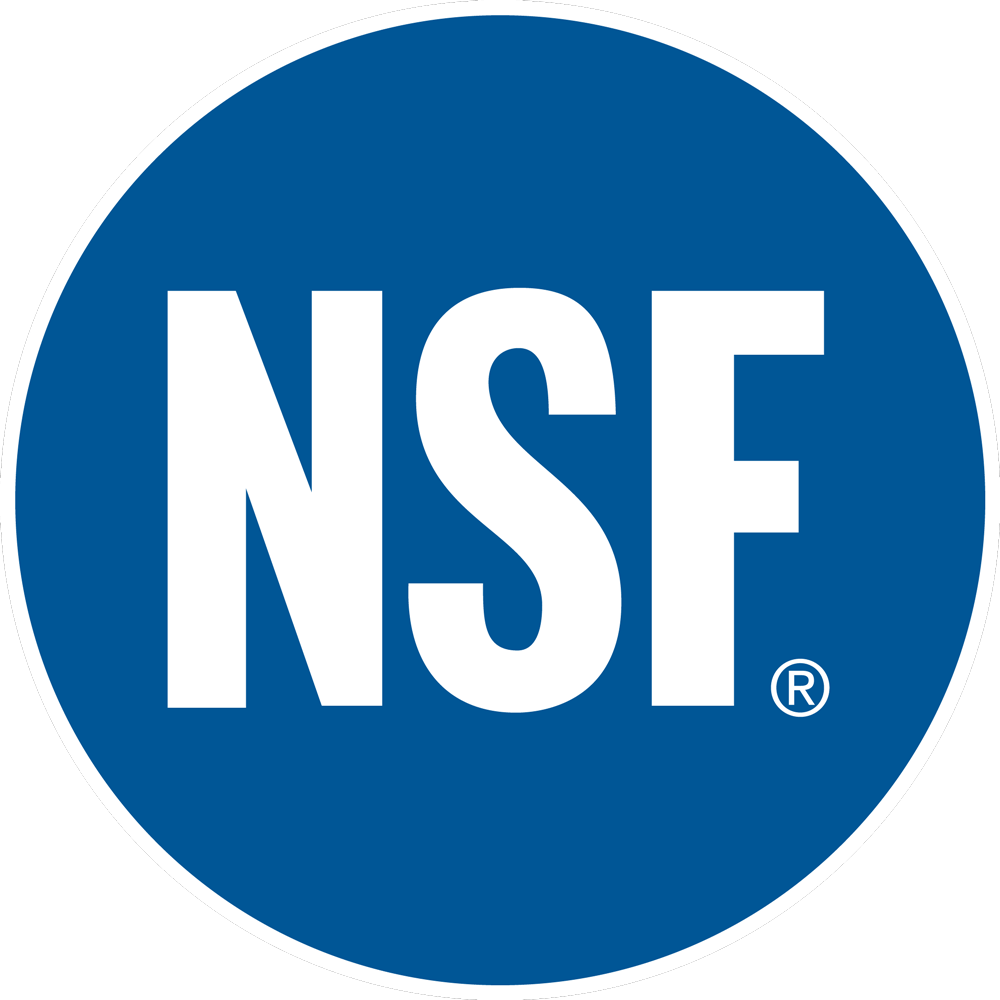ADVERTORIAL
Food Safety: 2023 Year in Review and 2024 Look Ahead
Q&A with Food Safety Expert Chris Malone
By Chris Malone, Senior Director, Food Retail Solutions, NSF

In 2023, the food industry continued to navigate operating in a post-COVID era alongside challenges including supply chain strains, labor shortages and the adoption of new technology. Read about some of the lessons learned over the past year and anticipated trends in the year ahead in this Q&A with Chris Malone, Senior Director of Food Retail Solutions at NSF, the leading global public health and safety organization.
Q: What were some of the biggest challenges the food industry faced in 2023?
A: This year held its fair share of challenges for the food industry. Many organizations were forced to adapt to a declining workforce, coupled with increasing operational costs across the supply chain. The challenging inflationary and cost-of-living backdrop led to many consumers seeking greater value for their money while also influencing store, restaurant, and product choices. Businesses have looked to new technologies and strategies to leverage profitability and prevent passing price increases on to customers while adding value and responding to menu and product demands. International conflicts, such as the war in Ukraine and the Israel-Hamas Conflict, caused some issues in the supply chain, such as making some ingredients less readily available. Food safety continued to be a topic in the news, from outbreaks and recalls (including shellfish, fruit puree, infant formula and dietary supplements) to the new organizational changes in the Food and Drug Administration (FDA).
Q: Labor shortages have impacted every industry, but especially the food industry this year. How have businesses addressed these shortages?
A: Businesses have continued to leverage new and innovative technology solutions to address labor shortages and do more with less resources. Some of the emerging technologies that have increased in use include self-serve kiosks, robotic and automated food equipment, cloud-based software, and the utilization of Artificial Intelligence (AI)-powered apps in customer service and experience. With the use of automation especially, retail businesses are investing in more sustainable solutions that allow them to be less reliant on physical labor.
Q: From viral documentaries to high-profile food safety litigation, this year saw an uptick in food safety awareness with consumers becoming more aware than ever before of the risks of foodborne illnesses. How should businesses bolster their food safety protocols and further protect consumers?
A: There has certainly been an increase in concern surrounding food safety among consumers this year, and it has created many opportunities for businesses to integrate food safety protocols and efforts into their messaging and marketing. A strong food safety culture is more important than ever and must be integrated into businesses of all types and sizes at all levels of the organization. Food safety audits and certifications from an independent, third-party organization such as NSF provide organizations with an option to further safeguard both customers and their brand by improving food safety.
Critical to any good food safety management program is making sure the equipment you use in your food operations does not pose potential food hygiene risks. Businesses utilizing ongoing training and supervision, adopting best practices while embedding a safety-first mentality throughout their organization, can build trust with consumers and create a competitive advantage in the marketplace.
Q: We have seen greater demand for healthier, better-for-you food options. As we look ahead to 2024, how will retail businesses in the industry adapt to respond to these consumer demands safely and effectively?
A: Today’s consumers are increasingly seeking both healthier and more eco-conscious options in grocery stores and restaurants. Food businesses are responding to this demand by offering new snack options and smaller portion sizes, in addition to items that include vegetarian/vegan selections such as plant-based meats and alternative milks. Such menu items are no longer found just in specialty stores; they are now offered at major chains around the globe. Businesses are also experimenting with more environmentally friendly packaging and partnering with nonprofits to offer options that give back to the community. With supply chain visibility, updated regulations and stronger traceability, businesses can confidently select new menu items from trusted sources to appease customers. We will continue to see businesses cater more to allergens and other special dietary needs, with allergy-free items and menus being offered more readily.
Q: As part of the trend towards wellness, businesses are also feeling the pressure to become more sustainable. What are your thoughts on this?
A: Sustainability is an important topic in the food industry and many others. According to Statista, the global food industry accounted for more than $9.6 trillion in 2023. Operating on such a large scale, the food industry has an immense obligation to responsibly steward the natural resources it uses and impacts. Environmental, social, and governance (ESG) reporting is now being used to showcase best practices and demonstrate an organization’s commitments. Companies are being held to greater accountability with ESG reporting, and specific areas such as fair-trade practices and reducing the carbon footprint have become higher priorities. Third-party partners such as NSF work alongside businesses to develop corporate sustainability strategies, ESG frameworks, reporting protocols, and supply chain integrity.
Q: We saw many improvements in food safety around the globe after the pandemic. What are some of the ways businesses have continued to ramp up food safety?
A: Food safety awareness has only increased over the years and is now top of mind for both the industry and the public. While the pandemic increased focus on personal hygiene and sanitation, heightened protocols have become commonplace among food businesses. Added pressure from consumers on food traceability and transparency has been adopted by businesses as they more clearly communicate what goes into their products, how their products are made and where ingredients are sourced. Companies are using supplier assurance technology to validate traceability, communicating this through food labels and marketing to offer peace of mind to consumers. Internally, food businesses are using interactive, virtual food safety training to educate and empower team members around the world.
Q: With changes to the FDA Food Code in 2022 taking effect in 2023, QSRs and other food retail businesses were required to comply with the updates. How is technology being used to help businesses invest in and improve their food safety solutions?
A: Innovative training solutions are key to driving food safety progress at the restaurant level. New tools such as NSF EyeSucceed, powered by TeamViewer, offer an augmented reality (AR) option that can be used to provide step-by-step instructions on everything from food safety to sanitation and are regularly updated to provide the most current training available. Cloud-based software such as TraQtion, which manages quality and compliance, helps grocery and restaurant chains to proactively manage the food supply chain, multiple sites and products all at once, eliminating risks of contamination and food fraud.
Information security is now a critical part of food safety. Cyberattacks are becoming more commonplace in the food industry, and in 2023 we saw several instances in which major food businesses fell victim to ransomware attacks and cyber breaches. Businesses are increasingly investing in cybersecurity by hosting more frequent and in-depth employee training, bolstering information security policies and preparing contingency plans for various information security situations. To address this need, NSF launched NSF CyberSecure, a new solution that uses Artificial Intelligence (AI) to build reliable, validated information security policies for organizations of all sizes.
Q: What are some of the more creative ways food businesses are improving the customer experience? How will this evolve in 2024?
A: In addition to using new technology, many food businesses are focusing on cutting down on wait times, from drive-throughs to in-store ordering. Companies are also using loyalty and rewards programs to encourage online ordering for both pick-up and delivery orders. Robots are being used to support both commercial kitchens with repetitive tasks such as flipping burgers or frying fries, as well as in the dining room to deliver food and wait tables.
In 2024, we can expect to see more of this technology being implemented on a broader scale. Businesses will also apply data analytics to drive more decisions and secure supply chains by conducting real-time monitoring of inventory, supplier performance, and quality.
Q: NSF has long served as a trusted partner for the food industry. How will the organization continue to support businesses in 2024?
A: Providing businesses with food safety solutions is an integral part of NSF’s mission to improve human and planet health, from farm to fork. As businesses start to broaden their practices to include more ESG efforts, emerging technologies, and safe, more effective training and protocols, NSF is leading the industry and partnering with organizations on their journeys.
Chris Malone leads NSF’s Food Retail, Food Contact Evaluations, and Food & Sustainability Advisory Solutions business units. Learn more about NSF at nsf.org.


